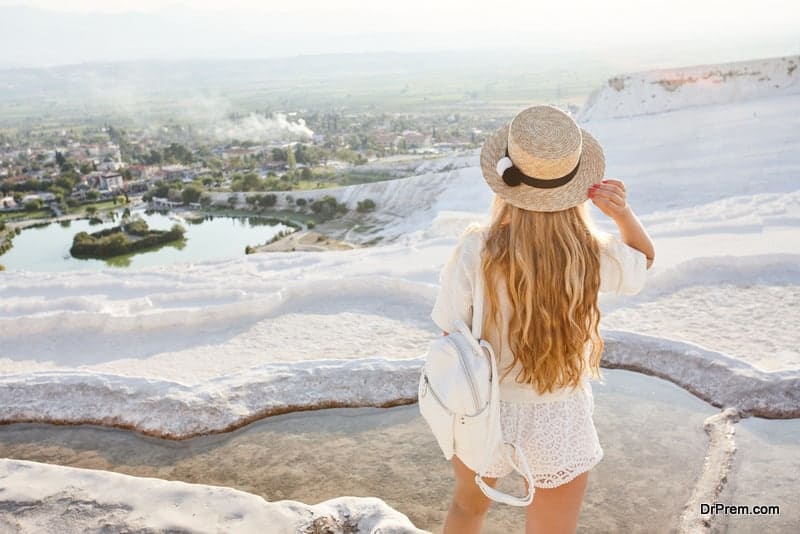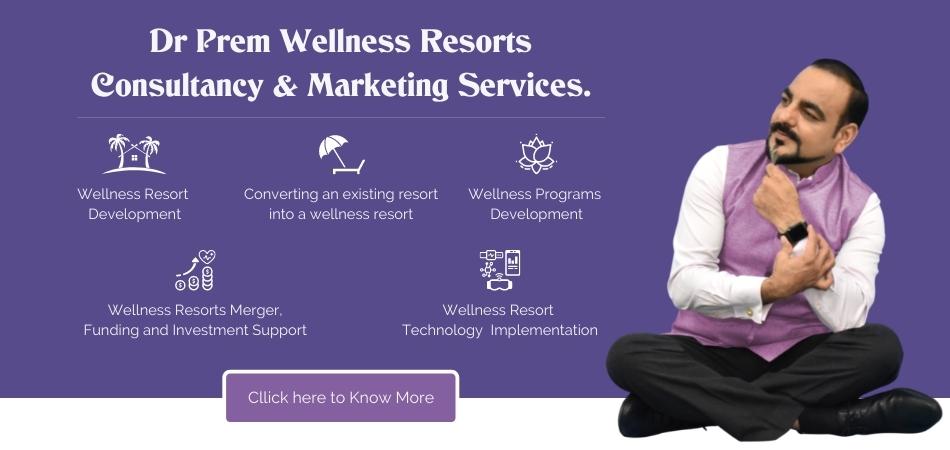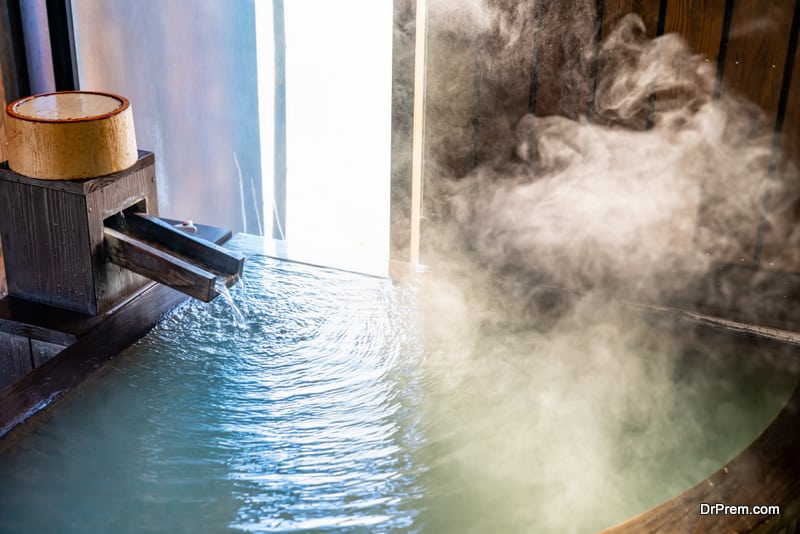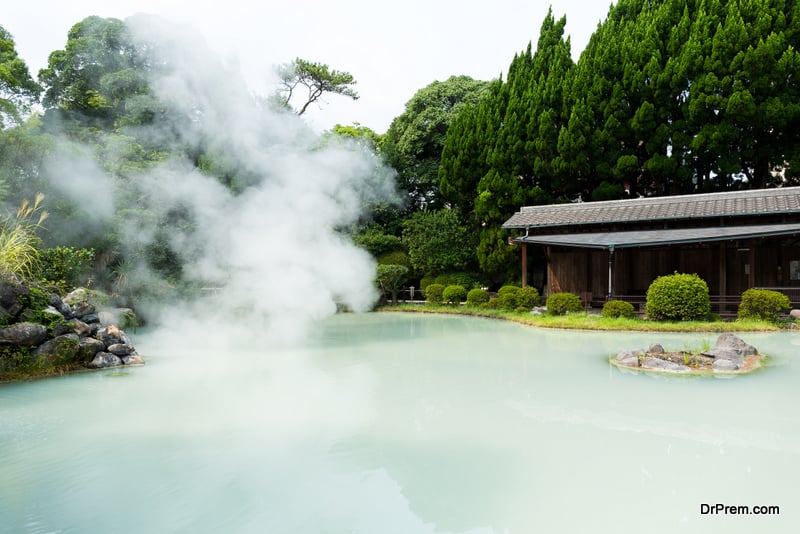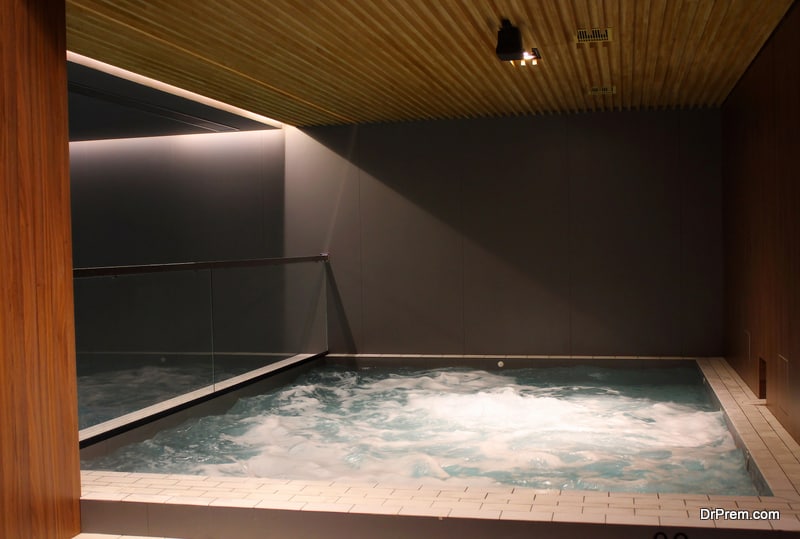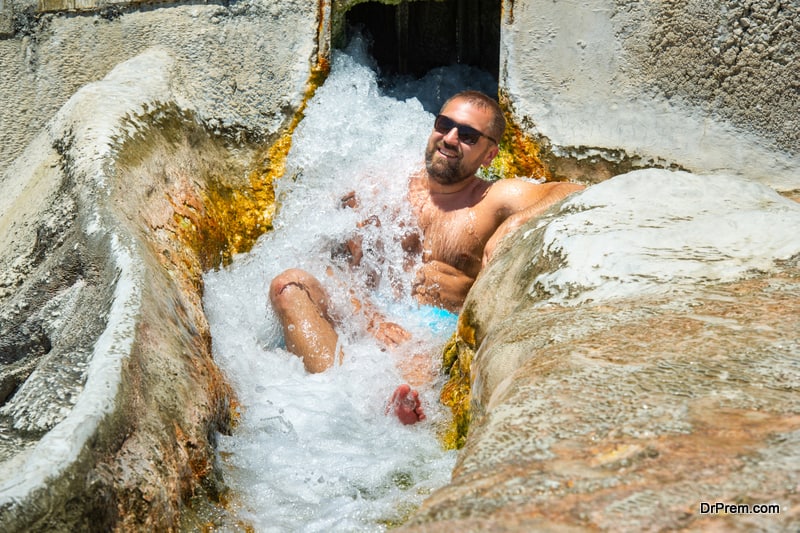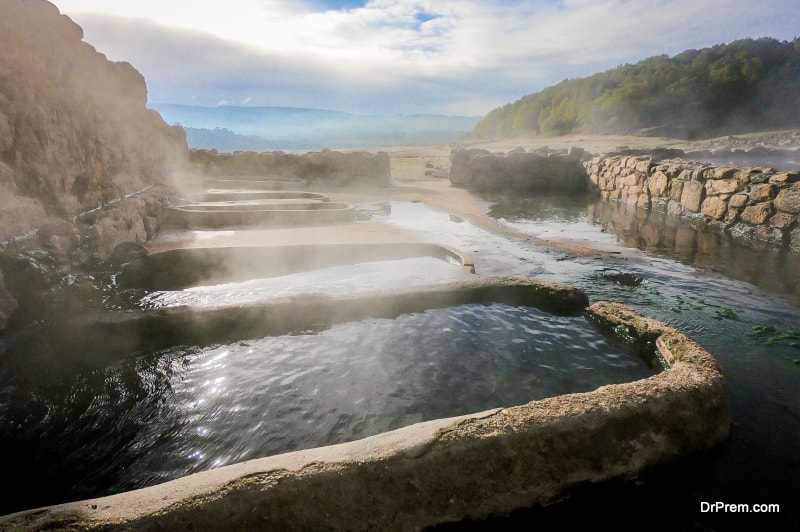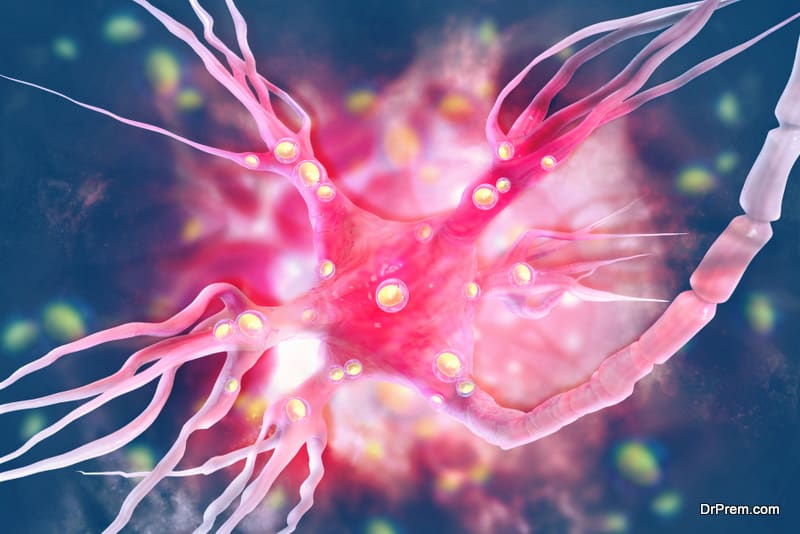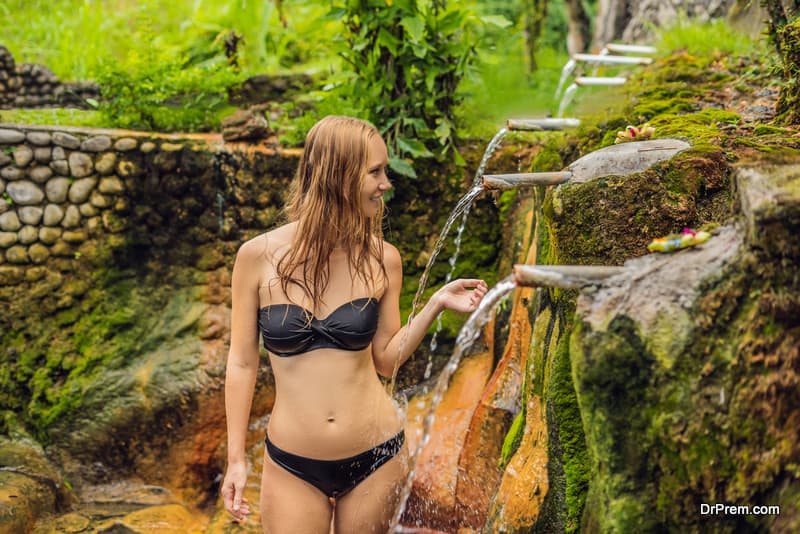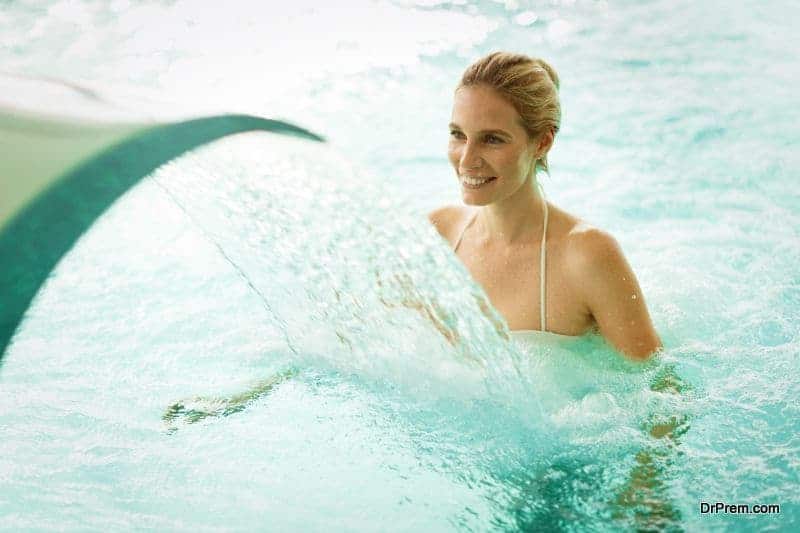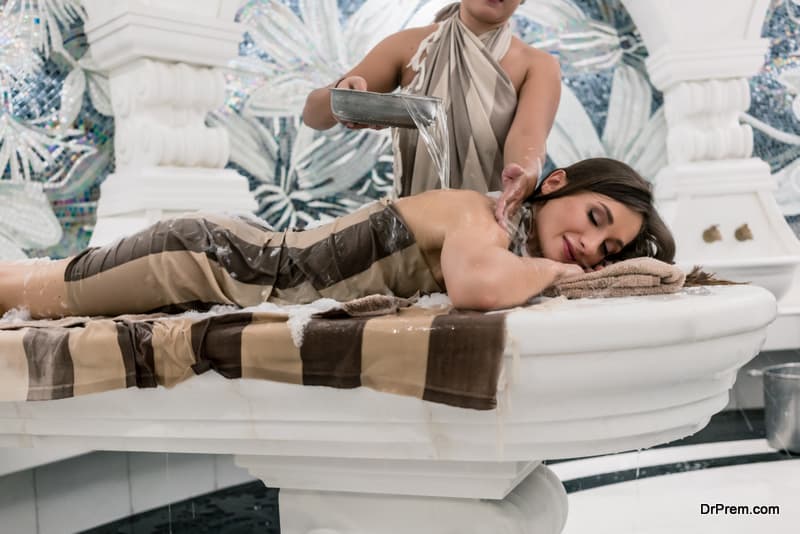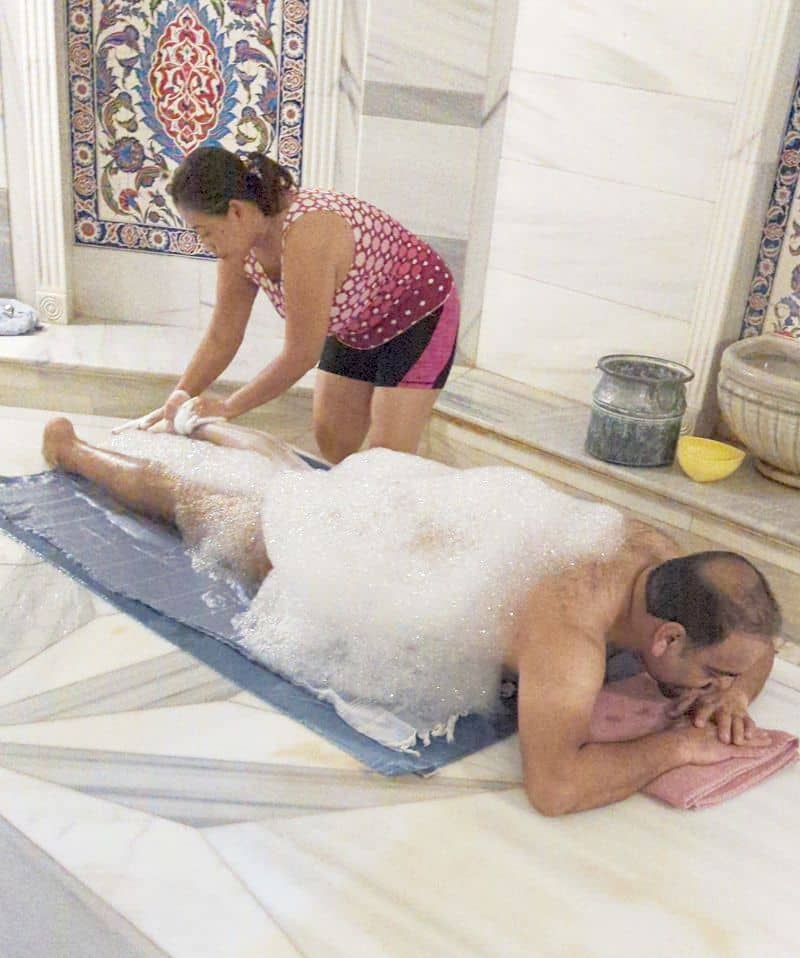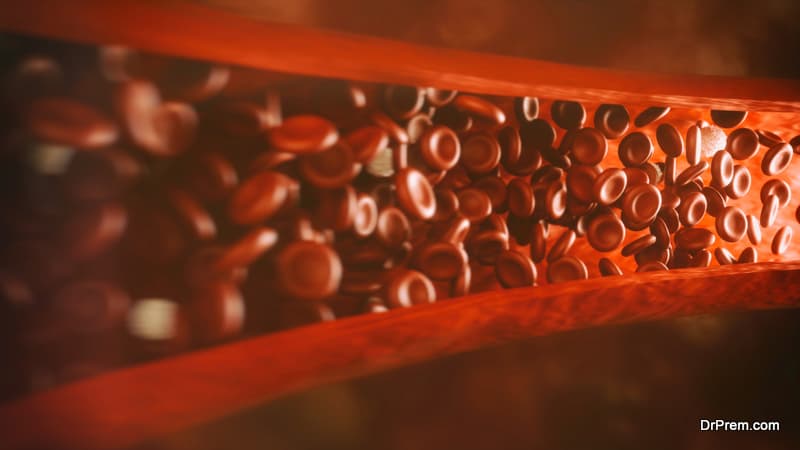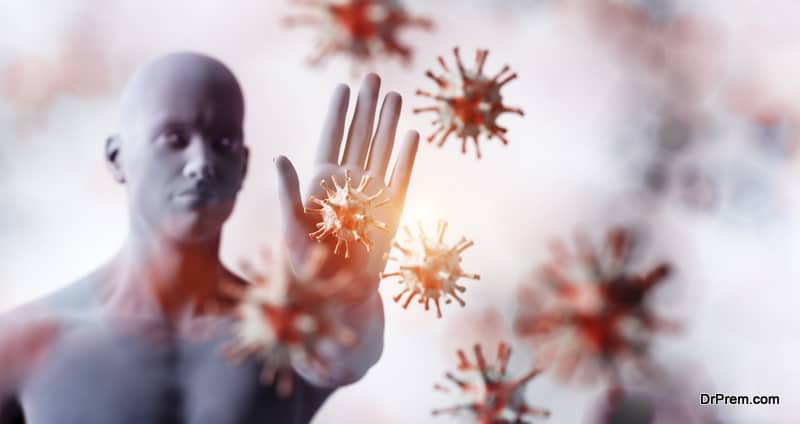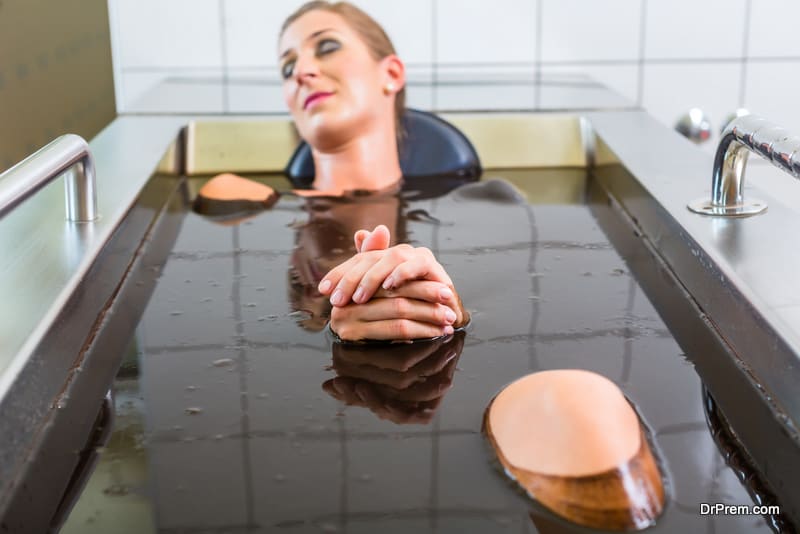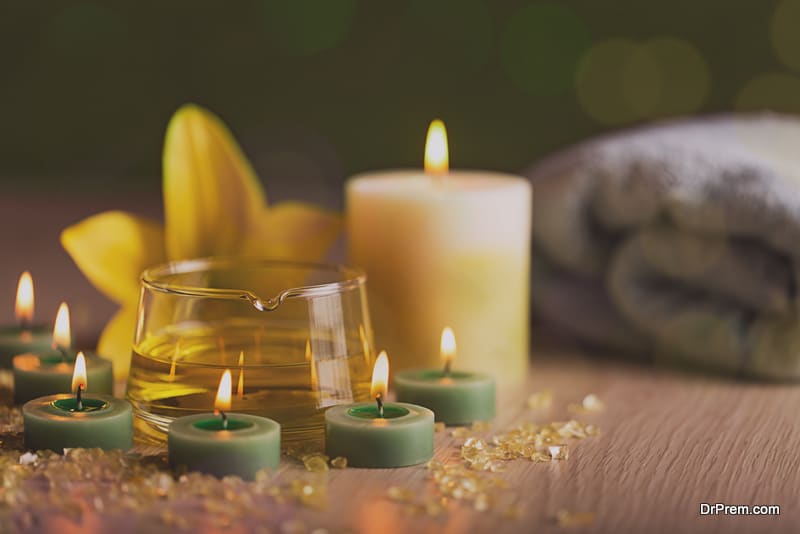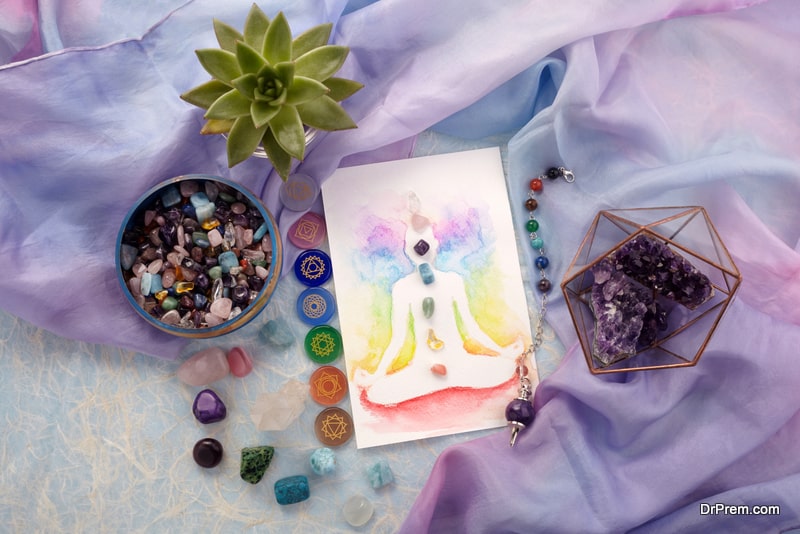Thermal water therapies, an ancient art reborn, are spearheading the flourishing Thermal tourism in Turkey.Thermal springs continue to be a captivating wellness tourism trend, poised to maintain their appeal well into the future.In this insightful guide, Dr. Prem Jagyasi, a globally recognized wellness advisor and wellness tourism consultant, spotlights Turkey’s pivotal role in this resurgence, where tradition meets modern luxury.
Equipped with the latest information, let us plunge into Turkey’s thermal springs and enjoy an immersive experience of health, relaxation, and cultural heritage combined. What makes this water so special? We will uncover how these natural sanctuaries are magnetizing health-conscious travelers for rejuvenation, and how they contribute to sustainable tourism and economic growth, firmly establishing Turkey as a leader in the global wellness economy.
Thermal Springs Unveiled: Dr. Prem’s Comprehensive Guide to Booming Thermal Tourism in Turkey –History, Trends, Facts, Benefits, and Impact on Wellness Tourism
-
The Epicenter of Innovation: International Thermal Health Tourism Forum 24
-
The Rising Tide of Thermal Tourism: Understanding its Global Growth
-
Spring Mineral Water bathing: An important wellness activity fuelling Thermal Tourism
-
Tracing the growth and prospects of the thermal and mineral spring industry
-
Global Market Overview of Thermal Tourism
-
Global Market Overview of Thermal Springs and Spas
-
The Booming Thermal Tourism in Turkey
-
What are the health benefits of Thermal water therapies?
-
Turkey witnessing the revival of Thermal water therapies
-
Treasures of Thermal Tourism in Turkey
-
Turkey’s Thermal Springs: Revolutionizing Spa Tradition
-
Revolutionizing Health with Integrated Medical Wellness in Thermal Tourism in Turkey
-
History of Thermal Baths in wellness activities
-
Geothermal Springs – A Vital Component of Wellness Tourism
-
Get Dr Prem’s Customized Consultancy on Thermal Resort and Spas
The Epicenter of Innovation: International Thermal Health Tourism Forum 24
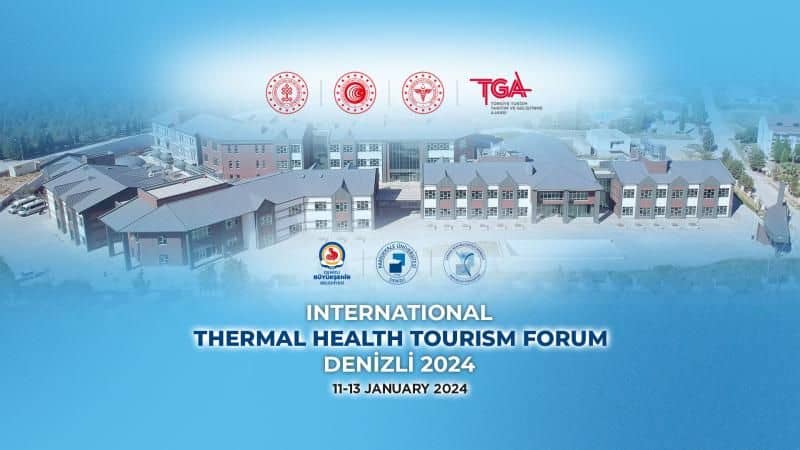
This glorious forum will see an illuminating gathering of industry leaders, experts, and officials to discover newer innovations in thermal tourism of this region that continue to be top tourist pullers.
Dr. Prem Jagyasi, an esteemed figure in health and wellness tourism, will present a pivotal masterclass focused on Pamukkale and Turkey, aiming to position them as the epicenters of experiential thermal tourism.
Dr. Prem’s profound experience is expected to elevate the importance of this forum in the global arena through unique innovations in thermal tourism.The masterclass promises to be a fusion of cutting-edge trends, tailored to the unique aspects of thermal tourism. Dr. Prem’s actionable, evidence-based strategies are designed to equip participants with the tools for advancing tourism development. His vision for transforming Pamukkale and Turkey into world-leading destinations in thermal tourism is poised to spark new interest and investment in the region.
The Rising Tide of Thermal Tourism: Understanding its Global Growth
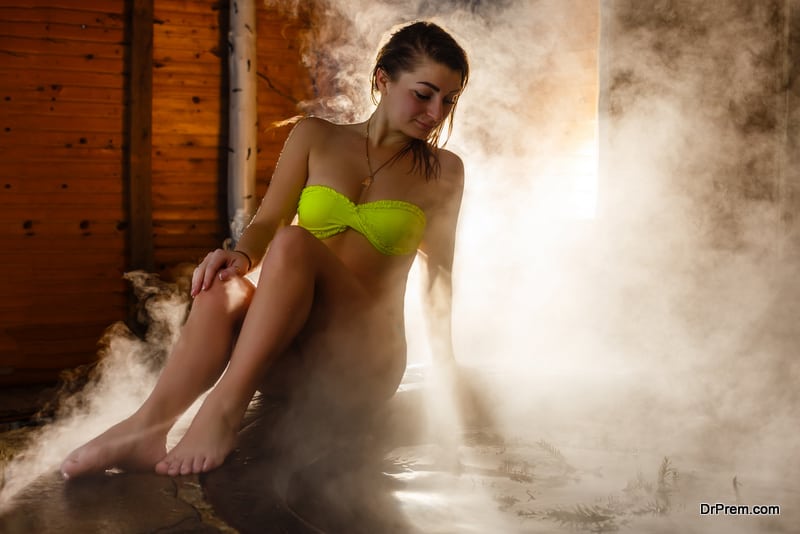
These natural springs, rich in minerals, offer proven therapeutic benefits, attracting health-conscious individuals seeking respite from the stresses of modern life. Additionally, as travelers become more experiential, they seek unique, culturally rich destinations – a niche that thermal tourism splendidly fills.
This niche provides a sanctuary for physical and mental rejuvenation and deep cultural immersion, as many thermal springs are steeped in historical and traditional significance. Moreover, the shift towards sustainable and eco-friendly travel practices has spotlighted thermal springs as a natural, environmentally harmonious choice.
This growing interest is further bolstered by the medical community’s endorsement of the health benefits of mineral-rich waters. All these factors, combined with the increasingly luxurious and sophisticated facilities at thermal resorts, make thermal tourism an irresistible choice for a growing segment of travelers, fueling its global expansion.
Spring Mineral Water Bathing: An important wellness activity fuelling Thermal Tourism
Driven by the growing wellness craze, travelers prefer bathing in natural hot springs making Thermal Tourism, an offshoot trend in wellness tourism. Destinations abundant with natural hot springs are fast growing as preferred wellness tourism destinations through aggressive marketing of their natural resource.
Wellness and mineral springs see massive gains in growth
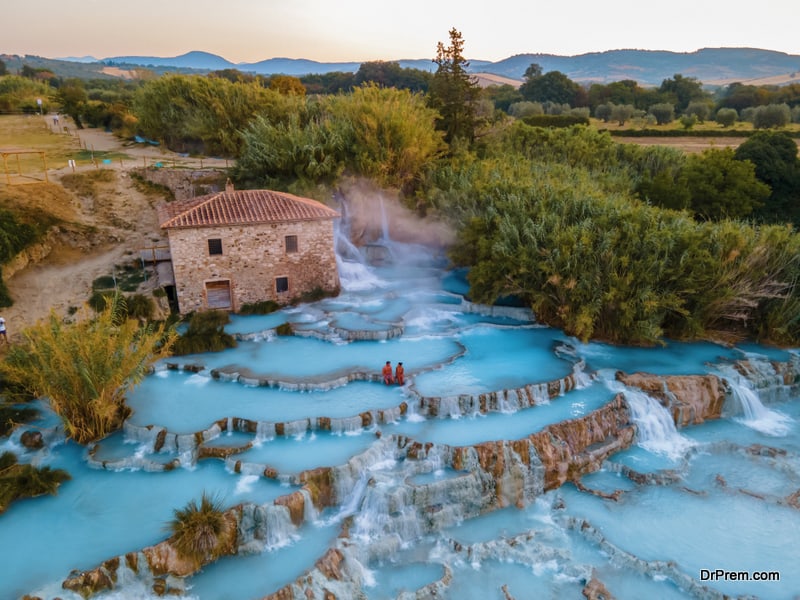
Social Bathing: A Wellness Trend Revitalized by Thermal Springs
The concept of social bathing is swiftly gaining momentum in the wellness world, offering a unique blend of communal relaxation and health benefits. Thermal springs, with their natural, mineral-rich waters, are at the forefront of this trend.
They provide a serene setting where people can gather, unwind, and connect in a tranquil environment. By fostering a sense of community and shared experience, thermal springs are redefining social wellness, making them a popular choice for those seeking both health benefits and social engagement.
Co-ed Thermal Bathing is gaining popularity:
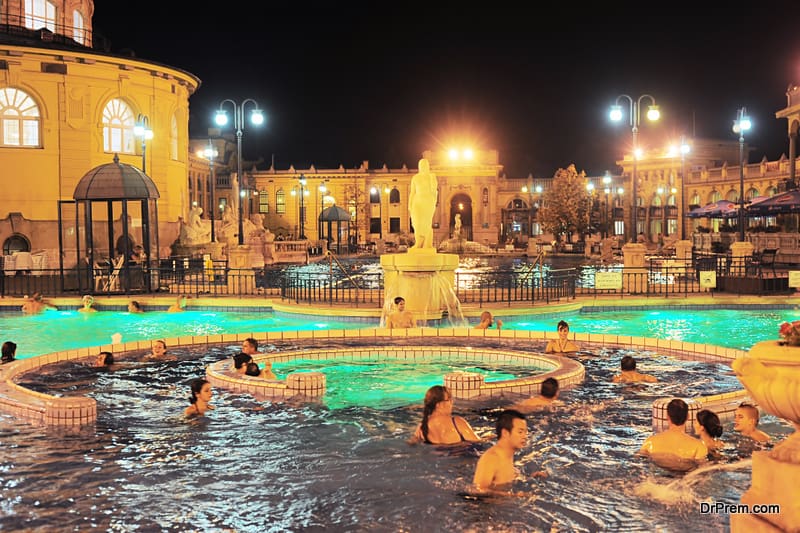
The younger generation is making the best of this Coed Thermal Bathing or Mixed Thermal Bathing. They tend to seek group and social wellness activities. They have recognized the benefits of social spa far outweigh single-sex thermal bathing.
Privacy issues are taken care of by providing some private areas in the locker rooms while the main spa complex is designed as open communal spaces. The visitors may have to maintain a dress code as specified by the Spa.
Tracing the growth and prospects of the thermal and mineral spring industry
Modern travelers are trying to integrate their healthy lifestyle with traveling. Global tourism is growing faster along with the number of high-yielding tourists who are interested in revitalizing their health.
They are demanding healthy rooms, menus, fitness centers, spa facilities, and other wellness-related services. Bathing is a traditional spa therapy that helps in healing and rejuvenation. The water of thermal and mineral springs is believed to heal both body and spirit.
In Europe, Latin America, and Japan people traditionally visit thermal and mineral springs to rejuvenate their health and regain their physical and mental prowess. This tradition first turned into a trend among modern individuals with high income and spare money and now it has grown into a full-fledged global industry.
Travelers are seeking authentic and destination-based spa experiences in the lap of nature. The growing interest in thermal springs has spurred many countries to market their thermal or mineral spa destinations to attract foreign wellness tourists.
The Global Spa & Wellness Economy Monitor has divided the thermal springs into two groups according to the availability of spa facilities. The hotels and resorts are building thermal springs and mineral water swimming pools. Thermal spring resorts in some regions and countries are capable of offering a variety of water-based facilities. The nature of the water-based spa therapies depends on the traditions and cultures of that particular region.
Global Market Overview of Thermal Tourism
When it comes to thermal tourism, Asia-Pacific and Europe are undisputed leaders, commanding a significant market share. China and Japan stand out, collectively contributing a substantial portion of global revenues and establishments, underscoring their dominance in this industry.
Meanwhile, Turkey is rapidly emerging as a key player. Boasting a rich resource base of approximately 1,500 thermal springs and 17 esteemed thermal spa resorts, Turkey is not just carving a niche but also expanding its influence in the global thermal wellness landscape. Turkey ranks 7th in the world in thermal water resources and 3rd in Europe for Thermal water resource utilization. This combined impact signifies a diverse and rich tapestry in the thermal springs market.
Global Market Overview of Thermal Springs and Spas
In wellness tourism, thermal and mineral springs are a burgeoning market, boasting a revenue of $64.0 billion in 2019. However, this vibrant industry faced a downturn in 2020, with earnings dropping to $39.1 billion. Despite this, the Global Wellness Institute (GWI) projects a robust recovery, forecasting growth to an impressive $90 billion by 2027.
Statista predicts an annual growth rate exceeding 18%. Europe remains a stronghold in this sector, hosting 6,188 facilities and witnessing the birth of 266 new projects from 2018 to 2022. The allure of natural element therapies and the substantial revenue from spa services underscore the thriving appeal and economic potential of thermal springs and spas globally.
The Booming Thermal Tourism in Turkey
Turkey’s thermal tourism landscape is a vibrant tableau of cultural heritage and natural wonder, significantly contributing to the nation’s economy. In 2019, the thermal springs tourism sector in Turkey generated a staggering $1 billion in revenue, attracting an influx of 750,000 overseas travelers, drawn to its unique blend of traditional wellness and natural beauty.
Esteemed destinations like Pamukkale, Yalova, and Balcova, among others, stand as jewels in Turkey’s thermal crown, each offering a distinct experience rooted in the rich tapestry of Turkish natural and cultural history.
Pamukkale, famous for its stunning white travertines, is not just a visual marvel but also a haven for therapeutic relaxation. Yalova and Balcova, similarly, offer unique wellness experiences, drawing visitors seeking solace in their healing waters. Tourists typically spend 4-5 days at these facilities, immersing themselves in the therapeutic properties of the springs, with average spending per tourist witnessing a significant rise.
Moreover, Turkey’s rich endowment of natural thermal water resources positions it as a global leader in this sector. Ranked among the top seven countries worldwide for its abundance of natural thermal waters, Turkey is also the most resource-rich country in Europe.
These springs are renowned for their health benefits, particularly in treating rheumatic and skin diseases, chronic inflammation, and musculoskeletal disorders, making them not just a tourist attraction but a holistic health destination. This blend of natural wealth, cultural depth, and health benefits cements Turkey’s standing in the global thermal tourism arena, promising continued growth and allure.
What are the health benefits of Thermal water therapies?
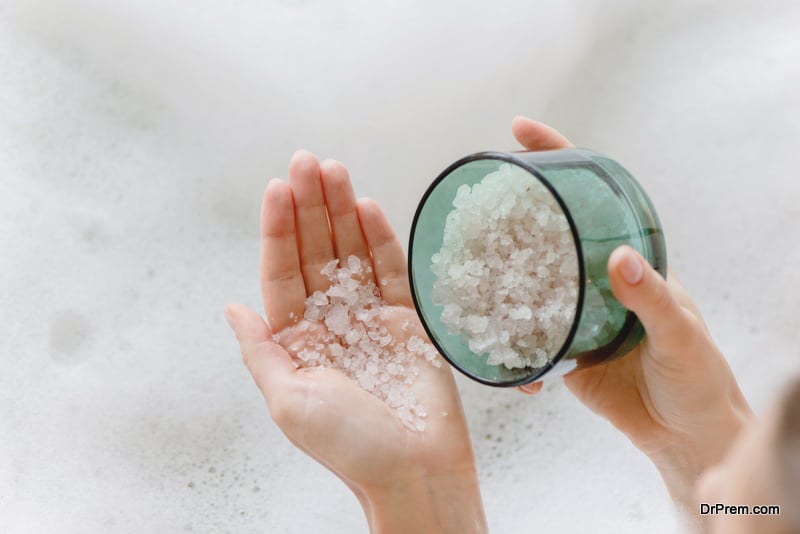
Temperature and mineral content of the water are prime determinants of healing which has led to the practice of thermal water bathing. Our body needs many trace minerals each having a distinct function. Thermal/spring waters are rich in sulfur, calcium, magnesium, bicarbonates, iron, sodium, chloride, etc. known to have special therapeutic effects. Epsom salt bath to treat arthritis and joint pains is a common practice, the effect can be even better with thermal springs.
Classification of Thermal waters:
Our in house experts have presented an interesting study on temperature variations of Turkey’s thermal spring waters in different regions.
- Cold water resources: Temperature 19°C concentrated in Central Anatolia, Marmara and Aegean regions.
- Hot water resources: Temperature 36°C-45°C concentrated in the Aegean, Marmara, and Central Anatolia regions.
- Very Hot water resources: Temperature above 46°C in the Central Anatolia, Marmara and Aegean regions. This has the highest healing potential.
Aegean region is known for the highest reserves of healing water followed by Marmara, Central Anatolia, East and Southeast Anatolia, the Black Sea and the Mediterranean region.
Thermal/mineralspring water is recommended for treating:
- Skin diseases like eczema, acne and psoriasis
- Musculoskeletal disorders, joint problems, rheumatic disease, calcification, soft tissue rheumatism and injuries.
- Gastrointestinal problems
- Diabetes
- Gout
- Liver failure
- Diseases of the kidney and urinary tract like chronic cystitis, kidney stones and functional insufficiency.
- Neurological disorders in the spine
Thermal springs are also known to be beneficial in improving the quality of life of patients crippled with degenerative diseases. It is also recommended for rehabilitation from stroke and other senile disorders impairing mobility.
The natural ‘detox water’:
Lately, thermal water is considered as the detox water that strengthens the body along with purification. The mineral content of water helps in throwing out harmful toxins from the body. As you remain soaked in thermal water, your body absorbs traces of minerals from the water which boosts the circulatory system aiding in detoxification.
Children can benefit too:
Nowadays, many thermal spa resorts have specially curated spa programs for children as well. Thermal spring waters work best in curing curing upper respiratory tract problems like hay fever and asthma which are common in children.
Thermal water for the elderly:
Elderly people suffering from chronic ailments like hypertension, coronary heart disease, chronic lung disease and diabetes can benefit from thermal water therapies. A specialist recommendation is necessary regarding the selection of thermal spring and treatment procedures.
Duration of the treatment matters:
This varies according to the nature of the ailment and patient condition. Healing in thermal spring waters is more of an adaptation therapy. You cannot expect overnight results. It normally takes at least 10-15 days for the treatments to be effective. The ideal temperature of the water should be 36-38° C.
Turkey witnessing the revival of Thermal water therapies:

Promising healing for all, Turkey’s thermal water baths are founded on rich history from the days of Seljuk and Ottoman reigns. By establishing sustainable bathing spaces, each one an architectural marvel, Turkey gave birth to a phenomenal bathing culture ‘Turkish Bath’ or Hammams that not only cleans but also heals.
Romans preferred relaxing in large public baths with special heating methods invented thousands of years before. Even today, bubbling heat from springs is applied in spas and thermal resorts but in a modernized form. Of all regions, Anatolia drew the most attention with its unique water supplies.
A study by NIH states, all forms of Balneotherapy and spa therapy for rheumatic diseases in Turkey can be considered to be effective. With advanced techniques and facilities, the combined healing power of water and heat is applied in treating many diseases.
No two thermal springs in Turkey are the same. Each spring is unique in its mineral content, water temperature and gravity. Oksana Svetenko feels Turkey has a competitive edge here. With spa resorts and wellness retreats offering great value for money, visitors are sure to crowd here.
Treasures of Thermal Tourism in Turkey
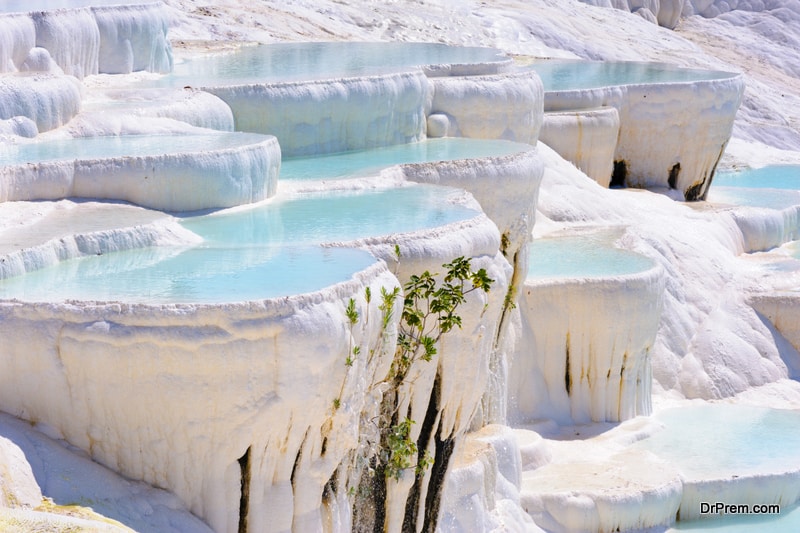
- Terma City, Yalova Turkey
- Pamukkale (Hierapolis)
- PaĢa Hot Springs (Allianoi)
- Aydın: KuĢadası,
- Denizli: PamukkaleveTekkeköy Hot Springs,
- Ġzmir: Balçova Hot Springs, Bademli Hot Springs,
- Güzellik Hot Springs, PaĢa Hot Springs,
- Haydar Hot Springs,
- Çanakkale: Hıdırlar Hot Springs previously named “Angonia”,
- Kocaeli: Tuzla Mineral Water,
- Ordu: SarmaĢık Hot Springs,
- Afyon: Ömer-Gecek, named as “Aqua Germ” during the antic era,
- Sandıklı, Gazlıgöl and Hüdai Hot Springs where was known as “Agros Thermon” in Antic era,
- Bursa: Yalova-Termal, known as “Pythia Thermae”,
- Oylat and Çekirge Hot Springs built by Roman Emperor Julius Ceasar,
- Balıkesir: Manyas ve Gönen Hot Springs,
- Ankara: Kızılcahamam Hot Springs,
- Muğla: Sultaniye Hot Springs,
- Yozgat: Sarıkaya Hot Springs,
- UĢak :Aksaz Hot Springs,
- Samsun: Ladik Hot Springs
Thermal Springs regulated by the Ministry of Health:
Regulation of Hot Springs created by the ministry of health categorizes Turkey’s spring waters as follows:
-
Hot Springs Curing Centers:
These have outpatient treatment facilities for patients controlled by specialists. Patients also get the hot spring ambience with special accommodation facilities.
-
Hot Springs Curing Cliniques:
Patients recommended for Hot Spring therapies get inpatient treatments termed as ‘enclosed curing’ by specialists. These are like clinics with all sorts of clinical arrangements.
-
Hot Springs Curing Hotels:
These are hotel-type facilities offering spa services and other hot spring therapies with other recreation facilities. Treatments are performed by specialists. The hotel part should comply with the Regulation of Certification and Qualifications of Tourism facilities.
Turkey’s Thermal Springs: Revolutionizing spa tradition
Today, Turkey has taken over traditional practices and has become one of the leading countries offering varied thermal water therapies including balneotherapy, thalassotherapy, massage therapy, thermo mineral bathing , mud therapy and other thermal cures.
Antic spas have been upgraded for international travelers along with the opening of state-of-the-art hotels, resorts and spas. Some are even providing in-room private thermal spas by channelizing water flow from the source.
Modern technology and traditional practices have been integrated without marring the essence of yesteryears. You will find luxurious hotels, trained specialists and therapists and high standards of hospitality and also get to taste the age-old authentic experience. Here lies the specialty of Turkey’s wellness offerings.
Not a cookie-cutter wellness experience:
Wellness offerings of each thermal spa resort are a specialty by itself based on its natural resources and assets. Such a wide variation in products and therapies are drawing discerning travelers seeking authentic wellness flavors. A relaxing bath in these magical waters amidst a serene ambience rejuvenates guests physically and psychologically.
Turkey offers a holistic approach to wellness with its splendid landscapes, thermal springs, traditional Turkish baths, rich cultural heritage, historical marvels, delicious cuisine and ample recreational activities. With investments flowing in and innovative therapies picking up pace, Turkey is on the fast-track growth in health and wellness tourism.
Revolutionizing Health with Integrated Medical Wellness in Thermal Tourism in Turkey
Integrated Medical Wellness Therapies in thermal springs are revolutionizing the approach to health and relaxation, blending ancient traditions with modern medical practices. For example, Thermal Physiotherapy can combine physiotherapy with thermal water treatments, enhancing rehabilitation and recovery.
Turkish Hammams could be integrated with customized thermal therapies, offering a holistic experience. Ayurvedic therapies combined with mineral water and thermal mud can provide a unique healing experience.
Relaxing thermal spring soaks can enhance pre and post-surgical conditioning and recuperation.Thermal springs also play a pivotal role in stress management, where water yoga therapy, mindfulness practices, and aromatherapy converge in thermal pools.
Bedtime customized thermal water soaks can facilitate mind-body relaxation for sound sleep accompanied by sound healing and aromatherapy sessions,
Pain management and post-chemotherapy recovery could be addressed by integrating thermal baths with modern medical approaches. For cardiac and geriatric wellness, specialized programs combine therapeutic exercises with thermal water treatments.
Women’s health programs and weight management strategies are also integrated, offering tailored spa experiences and diet plans. Cancer care retreats could provide supportive environments combining thermal treatments with wellness activities. Post-treatment programs focus on immunity boosting, leveraging the therapeutic properties of thermal waters.
Innovative therapies may include aquafitness with biometric monitoring, genomic profiling based treatments, mindfulness meditation in geothermal caves, and thermal music therapy. Aesthetic treatments merge with thermal therapies for skin health, alongside detox facials, algae wraps, and various massages.
Even more unique experiences like Cleopatra’s milk baths and chromotherapy soaks can be integrated, each tailored to provide a comprehensive wellness experience that transcends traditional spa treatments. These integrated therapies not only enhance physical well-being but also promote mental and emotional health, marking a new era in medical wellness tourism.
History of Thermal Baths in wellness activities
Thermal bath is a body of warm water having rejuvenating properties. The Spas are the classic examples of thermal bath with minerals and other herbal mixes added in water at a specific temperature. Thermal baths have immense healing properties and are widely practiced in specific regions of the globe where there is an abundance of hot springs. Besides, modern spas also have facilities for mineral water baths and cold baths.
History:
Since time immemorial, man had been fascinated by the magical properties of water. Not only water cleans up your body externally and internally, it is believed to rejuvenate the tired muscles after having a relaxing bath at the end of a tiring day.
Ancient Romans and Greeks realized the immense benefits drawn from bathing in hot springs. Wounded soldiers were miraculously cured through this hot spring bathing. The history of thermal bath can be traced back to the Roman Empire which featured a number of Thermae and Balneae throughout the city of Rome. These were the ancient thermal baths. Thermae were larger in size and contained imperial baths where people had a good time enjoying in warm water.
It was a place for socialization as well. Some of these magnificent buildings that housed Thermae often had adjacent Villas, town houses and citadels. Balneae were small scale thermal baths with the same facilities as in Thermaes. The city had a large number of these public baths which came under both public and private ownership. These public baths were fed with water from adjacent rivers or a nearby stream. The water prior to being flown into the hot bathing chambers were heated by log set on fire.
It was the Turks who popularized thermal baths in 1565 creating Hammams (specially designed bathing rooms) with different chambers for hot air flow well known as Turkish bath. Thermal bathing is deep rooted in countries like Budapest and Turkey due to the abundance of Thermal Springs arising from seismic faults. With lots of innovations and luxury brought in, Thermal Baths have taken a new dimension providing a unique bathing experience.
Principle:
Thermal bath causes vasodilation of the blood flow in the limbs relaxing the entire body. In absence of water, the body cells loses their elasticity giving rise to aches in different organs , muscular cramps and severe physical disorders such as spondilytis, rheumatics, arthritis etc. The temperature of bathing water has a soothing effect. It regulates your body temperature and infuses energy along the vital channels of your body.
The principle of Thermal bath makes use of the properties of water among which the heated state of water is very important. When taken bath in heated water or when hot water is simply sprayed over the body, the intensity of blood flow along the blood vessels increases. Consequently, this results in transportation of food and oxygen by blood more vigorously to the organs of the body.
Methods:
The methods of thermal bath would call for heating the body of water uniformly and the temperature should be optimal so that it should not be too high to give you blisters nor should it be too low. A temperature around 35 – 38 degree centigrade would be ideal. Take a thorough dip until your muscles relax and you are overwhelmed with a soothing effect.
Benefits:
Thermal bath yields the following benefits:
- Heals skin disorder.
- Boosts blood circulation.
- Eliminate toxins from body.
- Improves immunity.
- Relieves pain.
- Relaxes muscles.
- Induces sleep.
Geothermal Springs – A Vital Component of Wellness Tourism
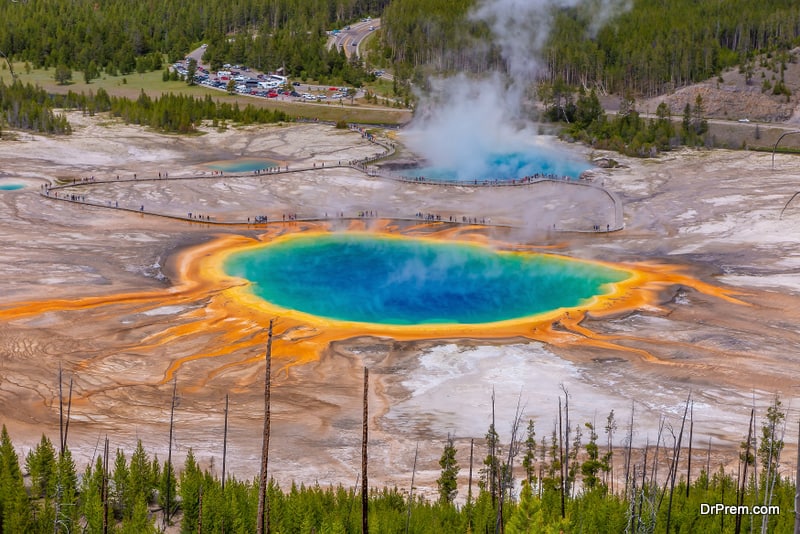
Use of Geothermal Pools in Wellness Tours

Dominica’s Boiling Lake:
This is the second largest geothermal lake in the world located in Dominica, which is a small island nation. The lake is a major tourist attraction and one of the most visited tourist attractions in the country.
Blue Lagoon:
The top destination for tourists in Iceland is Blue Lagoon, situated in Southwestern part of Iceland. The water here is rich in minerals like sulfur and silica with health benefits for visitors in the form of exfoliation, cleaning and skin nourishment. A bath in waters of Blue Lagoon is said to be particularly useful for people with specific skin diseases.
Grand Prismatic Pool:
It is one of the largest geothermal pools in the US and third largest in the whole world. The water of this pool is rich in minerals and visited by tourists from all around the world to explore the health benefits.
Bukfurdo Wells:
Waters of these geothermal wells, which are four in number, are rich in minerals such as magnesium, chloride and alkali-hydrocarbons. Calcium as we known is useful for the bones while magnesium supports muscle activity and carbon dioxide aides’ circulation. The other benefit is that people with chronic gastritis can drink this water to cure their problem.
Balneotherapy and Geothermal Springs
Medicinal spas are becoming part of wellness tours in different parts of the world they use water from thermal springs to cure many health problems. This technique of treating different medical conditions by using water from geothermal springs is known as balneotherapy and is combined with physiotherapy as well as therapeutic massages in spas to provide the best results.
Benefits of Different Types of Geothermal Water
Water of geothermal pools are rich in different types of minerals, which are beneficial for treatment of many ailments, let us look at some of the details here:
- Respiratory system inflammation can be cured effectively with geothermal water rich in iodine and calcium.
- Skin complaints and degenerative joint conditions can be solved with water, which has high concentration of sulphur.
- In peripheral circulatory problems and different heart conditions, patient gets relieve if water with dissolved carbon dioxide is used.
- Salty water is suggested for women suffering from different gynecological complaints and people with bladder infection.
- Geothermal water rich in radon is known to have pain-killing effects.
Things to Keep in Mind
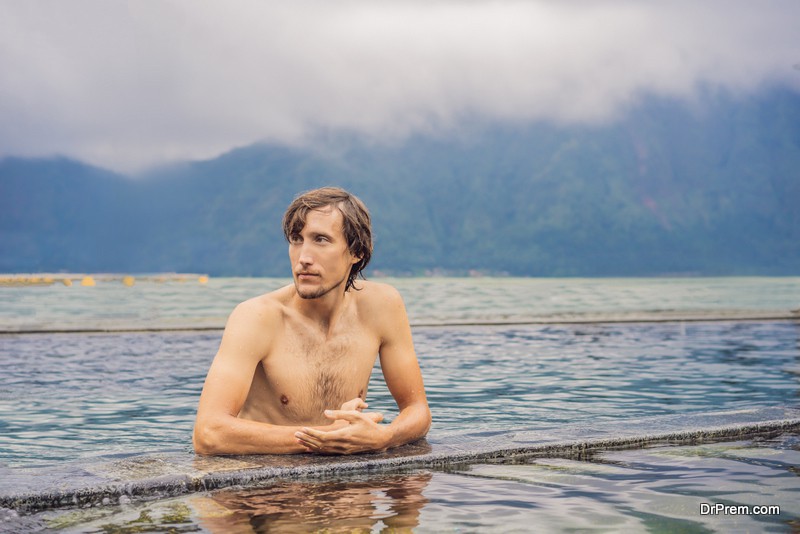
As we’ve explored, thermal water therapies are increasingly pivotal in wellness tourism, offering a unique blend of health benefits, cultural richness, and luxurious relaxation. We invite you to immerse yourself in Turkey’s thermal springs, where each soak is a journey through history and a step towards holistic well-being. This comprehensive guide, rooted in detailed research, illuminates the transformative power of these natural wonders.
Get Dr Prem’s Customized Consultancy on Thermal Resort and Spas
Dr. Prem, a global wellness advisor and veteran wellness tourism and resort consultant, brings unparalleled expertise from his travelling experience to 65+ countries. His impactful keynotes and masterclasses have revolutionized resort spas, fostering unique wellness experiences. As a recognized leader in wellness tourism consultancy, he empowers destinations to flourish with distinctive offerings. What to elevate your thermal spa resort? Book one-on-one consultation with Dr. Prem now.


